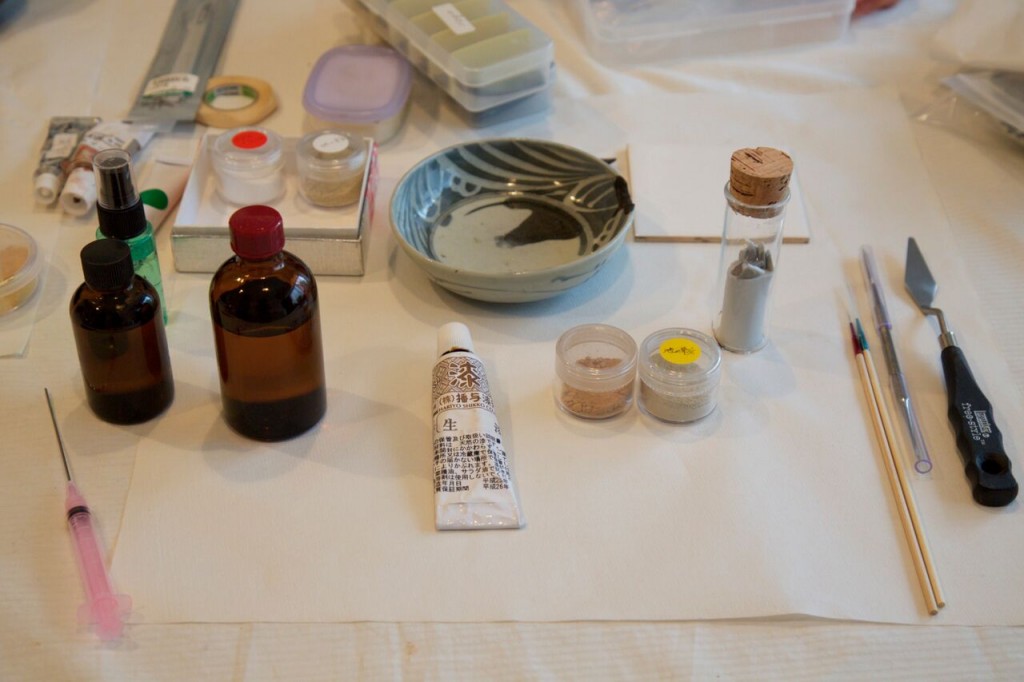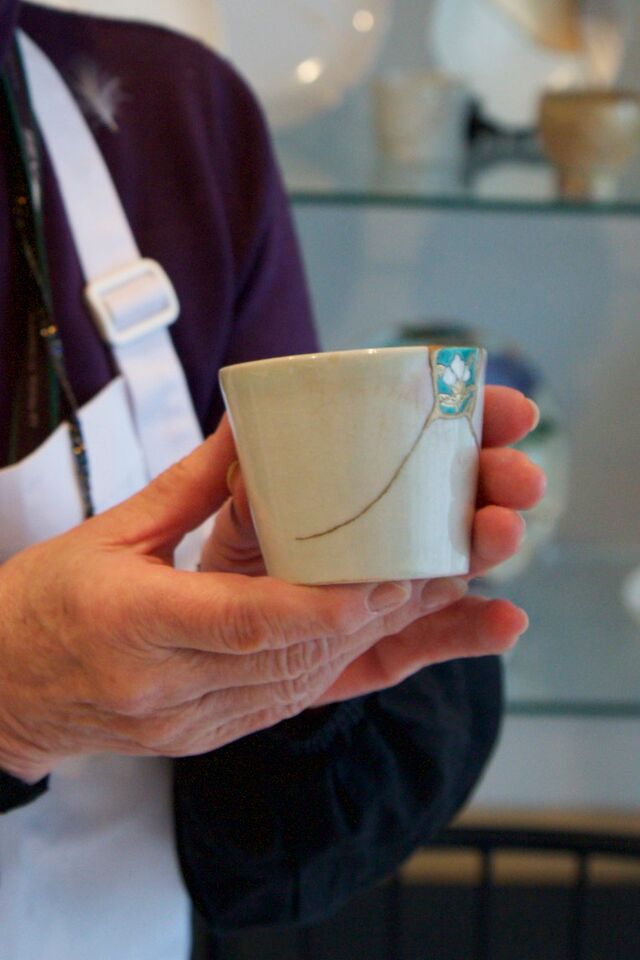MAD Masters: the Mender
For millennia, porcelain was so precious that broken pieces were sent from all over Asia to China to be carefully repaired with rice flour, lacquer, and metal brackets. The Japanese method of kintsugi—mending with thin veins of lacquer mixed with precious metals—appeared about 600 years ago, when a shogun demanded special treatment for his favorite teabowl. The beautiful result sparked a fad among collectors of the time. The most unscrupulous were said to have purposely smashed prized pieces for a chance to have them adorned with gold.
Tokyo artisan Kazue Ito began practicing kintsugi two decades ago out of sheer frustration. She was the chef and owner a restaurant at the time.
“Everyone kept breaking the dishes. There were so many broken pieces! In Japan, we now say that breaking a dish is a bad omen and that chipped things are rubbish. That did not feel right to me.”
To fix a small chip, Ito begins by applying layer upon layer of uruishi (lacquer), which can be ebony black, crimson, or a bright orange. Here she uses benigara urushi, lacquer colored crimson with iron oxide. Rice glue and stone powders can be mixed into the lacquer layers to quickly fill gaps and create a strong bond in less time. Sometimes, Ito mixes in modern resins to make repair practical for certain pieces.
“I’m not against technological progress. Many of the traditional techniques take a very long time and require working with very hard to use, expensive, and toxic sap from rare trees. A piece using the traditional method is ready only after the lacquer is thoroughly hardened and the joints have been burnished[1] to a shine over six months to a year. That’s not so suited to the realities of modern life.”
When done the traditional way, each microthin layer of lacquer requires a week of drying before the next one is applied. Gold, silver or bronze dust is applied after the lacquer layers have been built up.
“You can use a bamboo tool is for delicate sprinkling, but it’s easier to use a paintbrush. Just do what works. Once this dries, you can even put it in the dishwasher.”
“What is considered masterful in kintsugi is when you are able to fit shards from many different pieces together to make something completely new. You are also supposed to consider the quality of the lacquer lines between the breaks.
I think the real value of kintsugi is something else. Learning this process of making something whole again is good for your sanity. You see that life is hard. It takes work. And you see that what is broken can be even better than it was before.”
[1] This can involve paste of ground stone, silk, or the edge of a fish tooth.







